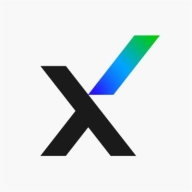

Check Point SandBlast Network and Trellix Advanced Threat Defense are key players in cybersecurity, each providing distinct capabilities in threat detection. While Trellix seems to have the upper hand due to its advanced features, Check Point enjoys better feedback regarding pricing and support.
Features: Check Point SandBlast Network is known for powerful threat emulation, effective zero-day threat mitigation, and seamless integration across diverse network environments. Trellix Advanced Threat Defense distinguishes itself with robust behavioral analytics, comprehensive anomaly detection, and advanced machine learning capabilities, providing greater threat visibility.
Room for Improvement: Check Point could improve by enhancing its feature depth in behavioral analytics, providing more robust anomaly detection, and expanding its machine learning capabilities. Trellix, on the other hand, might benefit from simplifying deployment processes, optimizing the integration across varied environments, and reducing upfront costs to improve cost-effectiveness.
Ease of Deployment and Customer Service: Check Point SandBlast Network is easier to deploy, requiring minimal configuration and relying on a responsive customer service team. Trellix Advanced Threat Defense demands more complex deployment but compensates with superior support services, assisting users throughout their setup process.
Pricing and ROI: Check Point SandBlast Network offers competitive pricing and strong ROI due to its ease of use and simple deployment. Trellix Advanced Threat Defense, with potentially higher initial costs, provides significant ROI through its extensive feature set and enhanced threat management capabilities, making it a worthwhile investment for feature-focused users.

Check Point’s evasion-resistant technology maximizes zero-day protection without compromising business productivity. For the first time, businesses can reduce the risk of unknown attacks by implementing a prevent-first approach. Learn More about Check Point Sandblast
Uncover Hidden Threats
Combine in-depth static code analysis, dynamic analysis (malware sandboxing), and machine learning to increase zero-day threat and ransomware detection.
Threat Intelligence Sharing
Immediately share threat intelligence across your entire infrastructure—including multi-vendor ecosystems—to reduce time from threat encounter to containment.
Enable Investigation
Validate threats and access critical indicators of compromise (IoCs) needed for investigation and threat hunting.
We monitor all Advanced Threat Protection (ATP) reviews to prevent fraudulent reviews and keep review quality high. We do not post reviews by company employees or direct competitors. We validate each review for authenticity via cross-reference with LinkedIn, and personal follow-up with the reviewer when necessary.